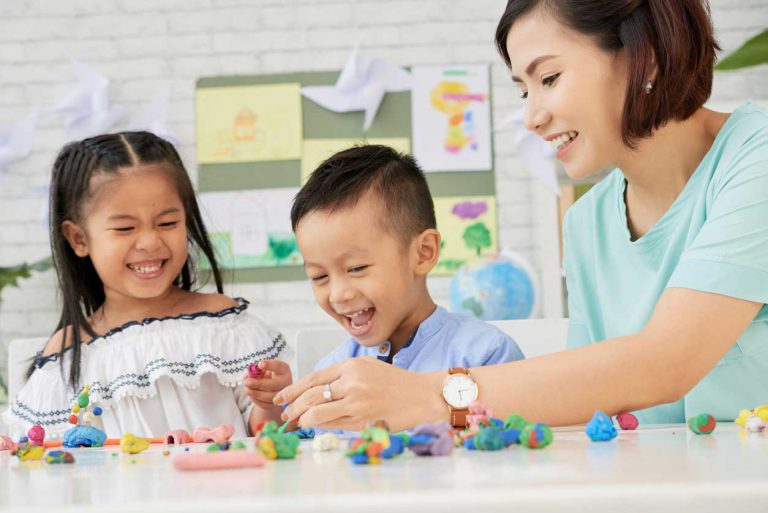By Susan Owens, Early Care and Education Specialist, The Family Conservancy
Originally published in the Summer 2021 Issue of Kansas Child magazine
Environment plays a crucial role in supporting child development. But how can you tell if the changes you make to the child care environment have positive impacts on the children you serve? The term “environment” includes many aspects that influence a child’s learning experiences throughout the day. A research-based assessment, such as the Classroom Assessment Scoring System® (CLASS), can determine what impact the environment is having on child development and confirm whether any changes you’ve made have been beneficial. Before you begin an assessment, you first need to identify the components of your child care environment. The physical space can include the structure of the building, the organization of supplies, the number of people in the space, and even the number of wall hangings. But don’t overlook less tangible components like the level of family involvement, daily schedules and routines, the comfort level of the room, and child-teacher interactions. All of these factors can affect child development in positive or negative ways. You’ll also need to determine a baseline before making changes to your child care program. Complete the same assessment before and after the changes are made to measure their impact. For example, the CLASS assessment involves a prescribed observation of the classroom.
If you want to make positive changes to your classroom environment, there are many areas to consider. One of the most important is the relationships between teachers and children. Relationships are just as important for infants as they are for school-age children. A classroom with strong personal connections encourages learning and helps everyone feel supported. Conflicts may still arise, but they will be handled in a more respectful manner. Another aspect of the environment to consider is the sharing of ideas. Examples include teachers asking open-ended questions about a topic or teachers holding lively conversations with children at the lunch table about what they will be doing that weekend.
Another component to consider is the use of language in the classroom. Communication doesn’t always involve verbal language. In a positive classroom environment, teachers should be communicating with children of all ages. The CLASS tool can assess how often teachers are supporting infants’ attempts at expressing themselves through gestures or partial sounds. With older children, teachers might explore new words and talk about what they are doing throughout the day. This type of self-talk helps make solid language impressions with the children. The CLASS tool also how they are affecting the children. Think about what happens if the expectations in a classroom aren’t clear. Children may start to wander or feel tired or bored. They may start using materials inappropriately. Assess the organization of the classroom to determine if the environment is supporting child development. The information you gain from your assessment can help the adults in your program make simple changes to continue giving the children in your care the best possible experiences. looks at physical aspects of the environment to see
Susan has a M.Ed. in instructional design and a teaching certificate in early childhood education and early childhood special education. She is certified as a CLASS observer for the Infant, Toddler, and Pre-K CLASS tool. She enjoys coaching and training early childhood professionals and promotes the idea that all experiences have an impact on children.
-

Child Care Aware of Kansas
Child Care Aware of Kansas connects everyone with a stake in child care — parents, child care providers, businesses, local and state leaders, and community members — to the information and ideas they need to take action. We provide opportunities, connections, and support for Kansans to envision what a better child care system can look like for them. Working within a network of Child Care Resource & Referral agencies, we also connect caregivers and providers to the information and support they need.






